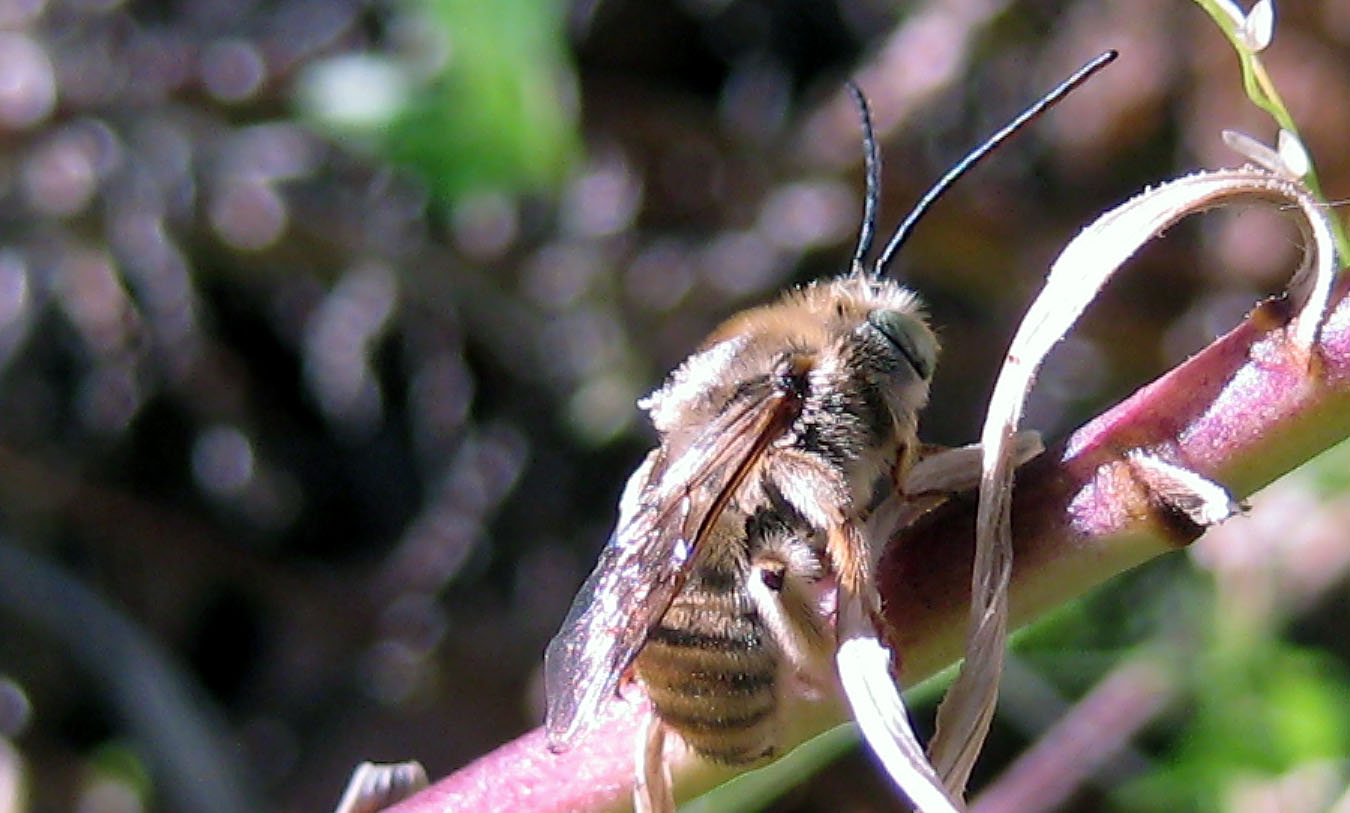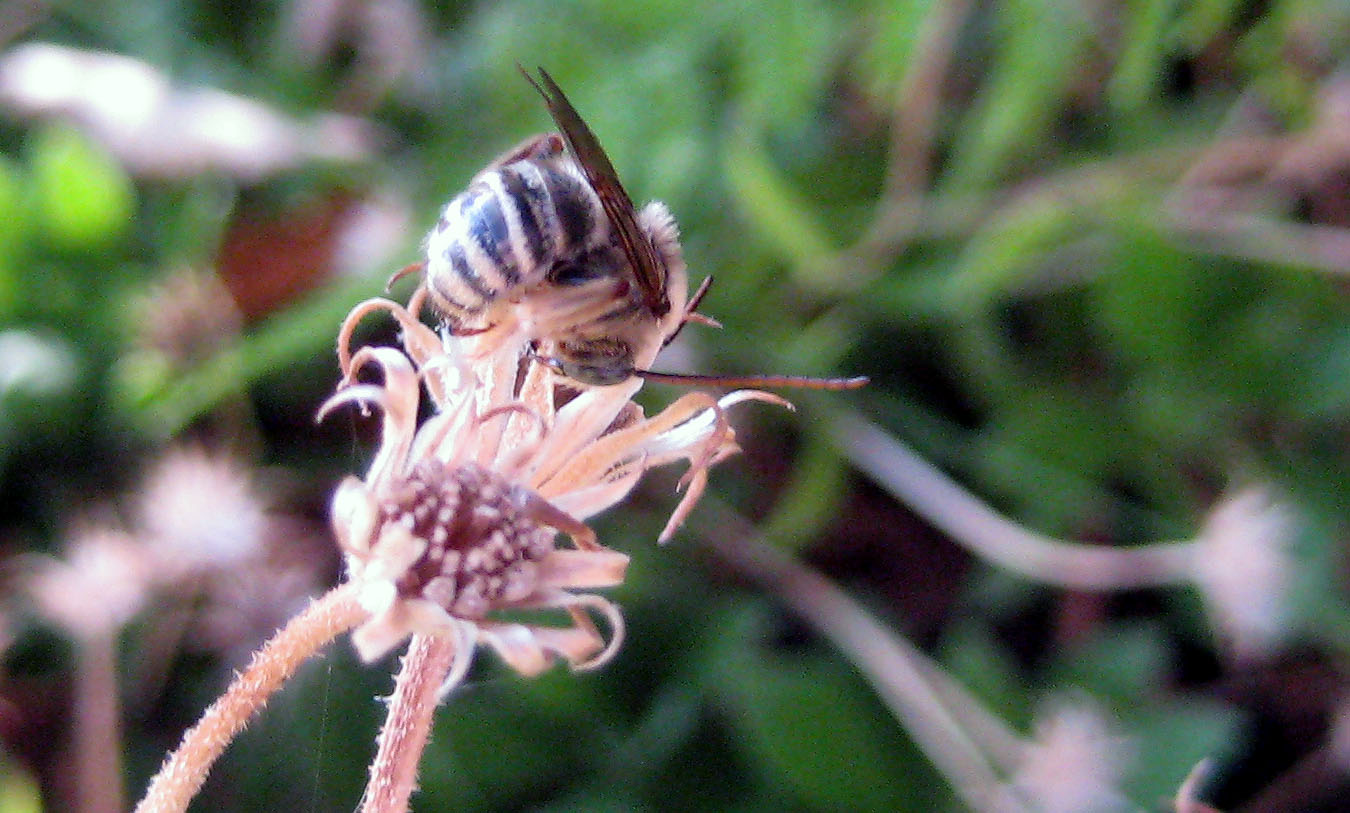I noticed it this morning, perhaps a dozen or so bees flitting about seemingly chasing each other over a small corner of the side yard where the African violets had bloomed earlier in the spring.
But these didn’t seem like your ordinary honey bees, no. There was something different about the way they moved and hovered and seemed to be almost playing with each other. Like a flying insect version of tag or something. In addition to that some of the bees would occasionally land on the dirt and disappear into the shadows of a tight space at the edge of a river rock where they’d stay for a few moments before flying out again. It was easy to spot where they’d land because a little spray of dirt had formed at various points in the dirt along the edge of the brick walkway. Were they digging?
The answer — yes! — came when one bee climbed out of a tiny established hole in the space between two bricks and joined in the melee and I knew for sure these weren’t ordinary honey bees. But what species might they be, these bee burrowers?
Well, later in the afternoon I checked back and sure enough they were still there, though their number and the level of activity had mellowed considerably. I spied one moving back and forth among the stems and stalks until it finally found a suitable sanctuary and set upon it long enough to marvel at the unfamiliar greenish hue of its eyes and to say “My what big antennae you have!” and get in close enough for this shot (click to enlarge):
Later I found a second bee who was all hunched over and totally still, and ssssshhhhhhh seemingly bunked down for the day:
Clearly these were some sort of special bee. So of course the first chance I got I Googled “burrowing bees” and from there narrowed it down to leafcutter bee, Andrenid bee or digger bee. Looking at images I was pretty much able to eliminate the first two, and it wasn’t until I came along a picture of a long-horned digger bee that I thought I may have had a match. And after uploading my pic and the particulars to Bugguide.net I waited, hoping someone far more etomologically educated than I could confirm or deny my layman’s guess.
I didn’t have to wait long. None other than Dr. John Ascher who manages the American Museum of Natural History Bee Database Project left a comment concurring with my assessment.
From what I’ve found digger bees are solitary and relatively docile around humans. Everything About Digger Bees has this informatiom, which may have been the activity I was witnessing this morning:
“Digger bees display very interesting nesting and foraging behavior. Many species nest in dense aggregations, and swarms of males cruise around the nesting sites searching for emerging females. In one species, the males can detect the females in the ground before they emerge. These males dig a hole into the ground where the female will emerge and then await her arrival. Other males attempt to take over and fights ensue. The largest bee usually wins. “
I’m not sure if these perching bees pictured are the winners or losers of those first-round fights, but I’ll check in tomorrow to see if there’s a second round scheduled.


 Follow
Follow